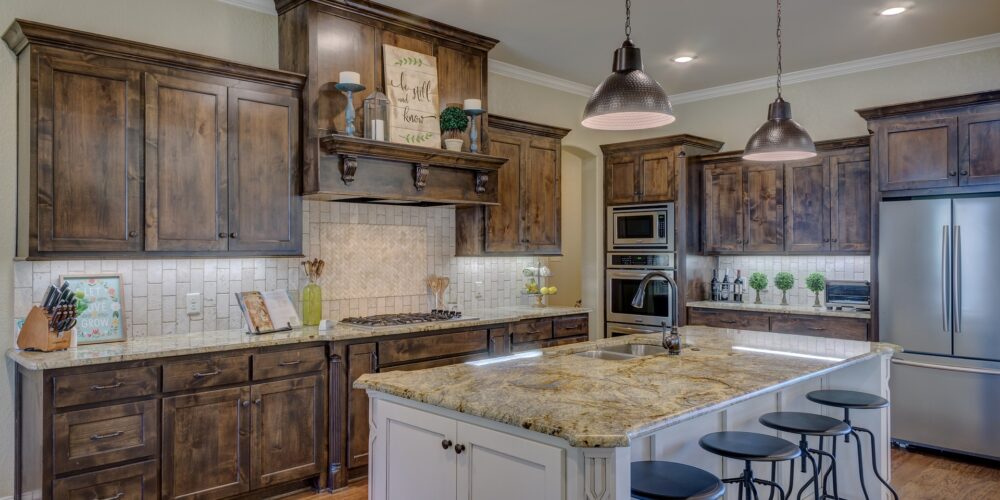
Kitchen Cabinet Crown Molding: Adding Elegance and Sophistication to Your Kitchen
When it comes to designing your dream kitchen, every detail matters. From the layout and color scheme to the hardware and finishes, each element plays a vital role in creating a space that is not only functional but also visually appealing. One such detail that can elevate the overall aesthetics of your kitchen is crown molding for your kitchen cabinets. Crown molding is a decorative trim installed at the top of the cabinets, creating a seamless transition between the cabinets and the ceiling. In this blog, we will delve into the beauty and benefits of adding crown molding to your kitchen cabinets and how it can transform the look of your culinary space.
The Beauty of Kitchen Cabinet Crown Molding
Crown molding is an architectural feature that has been used for centuries to enhance the elegance and visual appeal of a room. When applied to kitchen cabinets, it brings a touch of sophistication and refinement that can elevate the entire kitchen design. Here are some key reasons why kitchen cabinet crown molding is an excellent addition:
1. Aesthetics and Elegance
Crown molding adds a sense of grandeur and elegance to your kitchen cabinets. It softens the transition between the cabinets and the ceiling, creating a finished and polished look. Whether you have traditional or modern kitchen cabinets, crown molding can complement any style, adding a timeless charm to the space. The intricate details and delicate curves of the molding add a touch of architectural beauty to the kitchen, making it a focal point that draws the eye.
2. Concealing Cabinet Tops
Kitchen cabinets are often installed with a small gap between the top of the cabinet and the ceiling. This gap can collect dust and grime, making it challenging to clean. Crown molding provides a decorative solution to conceal the tops of the cabinets, preventing dust buildup and giving your kitchen a more polished appearance. It creates a seamless transition between the cabinets and the ceiling, making the entire kitchen cabinetry look like a cohesive unit.
3. Visual Height and Space
Crown molding draws the eye upward, creating a perception of height in the kitchen. This effect can be particularly beneficial for kitchens with low ceilings, making the space feel more open and airy. Additionally, crown molding can make a small kitchen appear larger and more spacious. By adding height to the upper cabinets, it gives the illusion of a higher ceiling, making the kitchen feel more expansive. This visual trickery can transform a cramped and closed-in space into an inviting and open environment.
4. Customization and Versatility
Kitchen cabinet crown molding comes in various designs, sizes, and materials, allowing for customization to match your unique style. You can choose from simple and understated moldings to intricate and ornate designs, depending on your preferences and the overall kitchen theme. The wide range of options ensures that you can find the perfect crown molding that complements your kitchen design and enhances its overall aesthetics. Whether you prefer a classic and traditional look or a sleek and modern style, there is a crown molding that suits your taste.
Installation and Considerations
While the idea of adding crown molding to your kitchen cabinets may sound appealing, proper installation is crucial to achieving the desired effect. It is best to leave the installation to professionals or experienced carpenters who have the expertise and tools to ensure a seamless and flawless look. Consider the following factors when adding crown molding to your kitchen cabinets:
- Size and Proportion: The size of the crown molding should be proportionate to the height of the cabinets and the overall kitchen space. Oversized or undersized moldings may disrupt the balance of the design. It is essential to choose a molding size that harmonizes with the scale of your kitchen.
- Material and Finish: Crown moldings are available in various materials, including wood, MDF (Medium-Density Fiberboard), and polyurethane. Each material has its unique characteristics and benefits. Wood crown moldings offer a classic and luxurious look, while MDF and polyurethane moldings are more affordable and resistant to moisture. The finish of the molding should complement the cabinet finish and the overall kitchen decor.
- Design and Style: Select a crown molding design that complements the cabinet style and the overall kitchen decor. For traditional kitchens, intricate and detailed moldings with decorative elements such as dentil molding or rope molding can be a beautiful addition. In contrast, modern kitchens may benefit from clean and streamlined profiles with minimal ornamentation.
- Color and Paint: Consider the color of the crown molding, whether you want it to match the color of the cabinets or provide a contrasting accent. Painted crown moldings can add a pop of color to the kitchen, while stained or natural wood moldings offer a warm and organic look.
Conclusion
Kitchen cabinet crown molding is an exquisite finishing touch that adds elegance and sophistication to your kitchen space. With its ability to conceal gaps, enhance aesthetics, and create an illusion of height, crown molding elevates the overall design of your kitchen cabinets. Whether you’re renovating your kitchen or building a new one, consider incorporating crown molding into your cabinet design. The timeless appeal and visual impact of crown molding will not only enhance your culinary experience but also add a touch of luxury and charm to the heart of your home. The attention to detail and thoughtful craftsmanship that crown molding brings will make your kitchen a true reflection of your style and a delightful space for family and friends to gather and create cherished memories.
